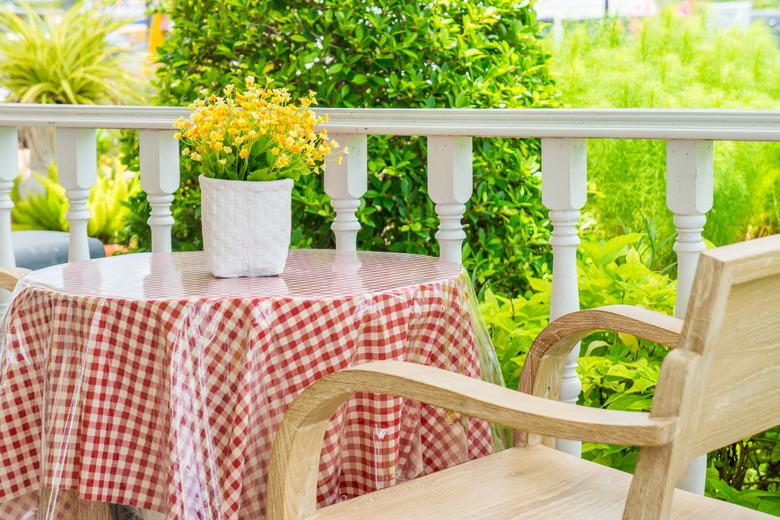How To Weatherproof Artificial Flowers And Plants
You can place artificial plants and flowers outside your home to add some low-maintenance greenery, but they may fade and get dirty or damaged if they are exposed to the elements. To avoid this, try to place them in a protected area, such as a porch. Rotate them frequently as well so that all sides are getting roughly the same amount of sun, ensuring that the color will remain relatively even. Even in a protected location, though, your artificial plants may still be exposed to sun and dirt, so weatherproofing them is a great way to keep them cleaner and make them last longer.
Advantages of Artificial Plants
Artificial plants are made from a variety of materials, including silk, cotton, latex, sateen, rayon, and rubber. They can look very lifelike and can help you achieve your home decor goals.
Artificial plants can give your home or patio a lush look full of foliage without the upkeep. The plants will never die and do not need to be watered or fertilized. If you travel frequently or do not get much sun on your porch or patio, you can achieve the aesthetic you desire without the perfect natural conditions. You do not have to worry about birds, squirrels, rabbits, deer, and other animals eating the plants or digging them up.
Use a UV-Protection Spray
Many artificial plants and flowers are already waterproof. Adding a UV-protection spray can prevent fading by helping artificial plants stand up to the sun's ultraviolet rays and providing additional weather protection.
Some artificial plants may be labeled as UV-proof already. If your plant has no UV protection or has already been sprayed with a UV-protection spray, you can spray it again with a high-caliber UV spray. If the plant was manufactured with UV treatment incorporated into the material itself, then this step is optional.
Some products you can use for UV protection are TriNova UV Protectant spray and Krylon Ultra UV Floral Protectant spray. After treating your plant, allow it to fully dry before handling it. As a safety precaution, apply the spray outdoors. Place a tarp or towel underneath the plant when spraying and wear safety goggles, a mask, and gloves. To get the best coverage and protection, clean the plant first.
Cleaning Artificial Plants
Before applying a UV-protectant spray, you want to eliminate any dust or debris on your artificial plants for a smooth, effective application. Because dust can accumulate on the plants in the store or in your home, first use a duster, microfiber cloth, or damp cloth or towel to remove any dust.
If needed, you can then spray a mild cleaning solution directly on the plant and allow it to set for approximately 15 minutes. Then clean off the spray with a damp cloth and dry the leaves and flowers with a dry cloth. Once the plant is fully dry, you are ready to use the UV-protectant spray.
